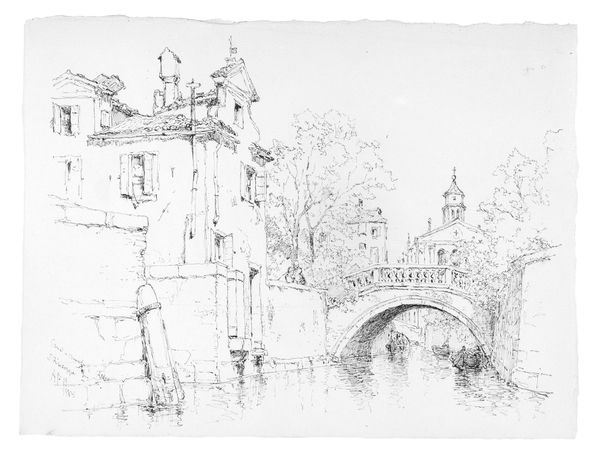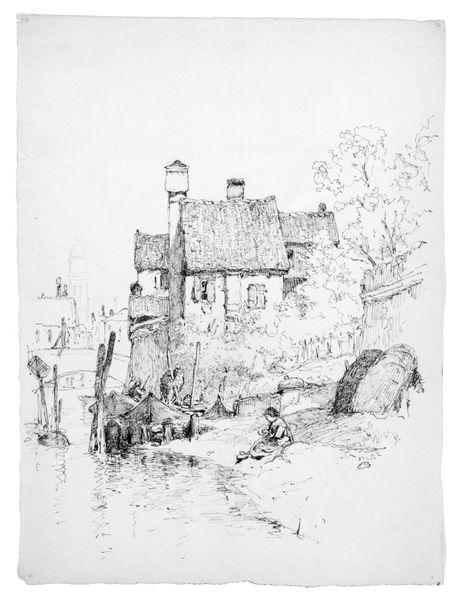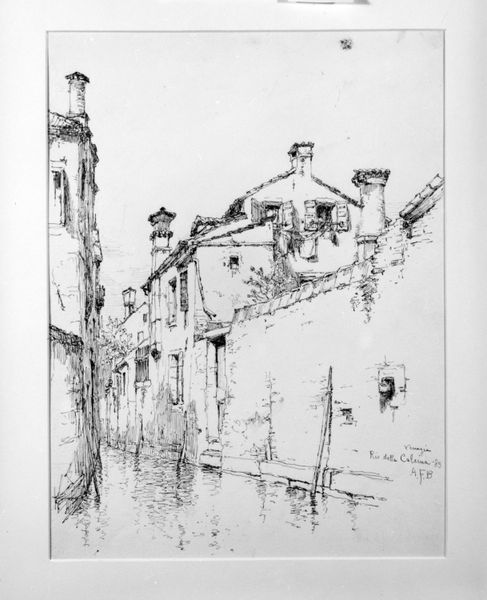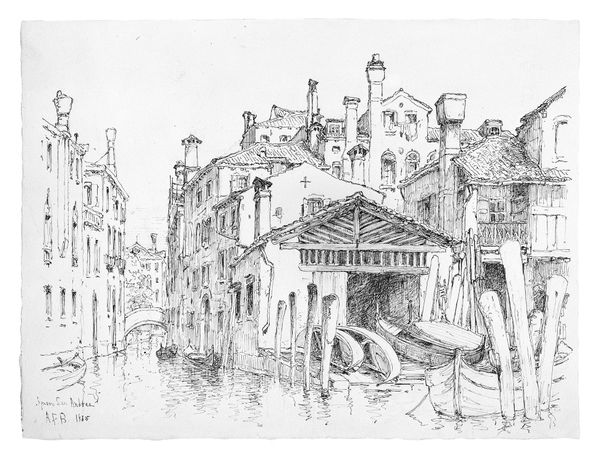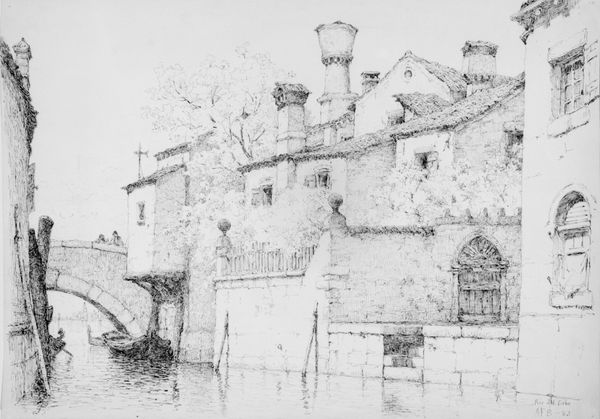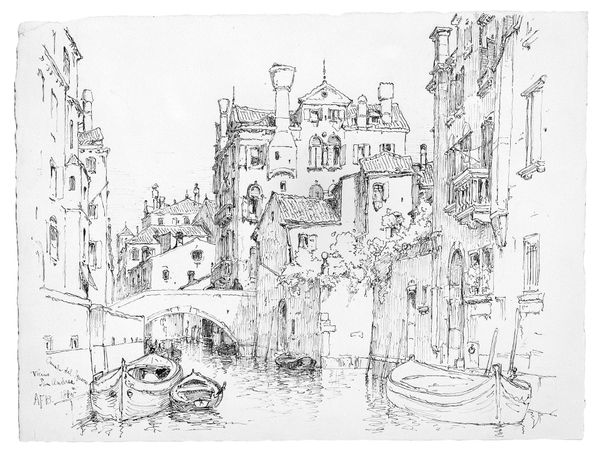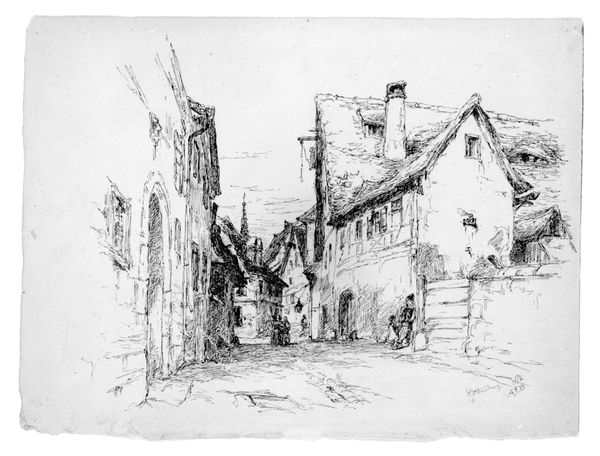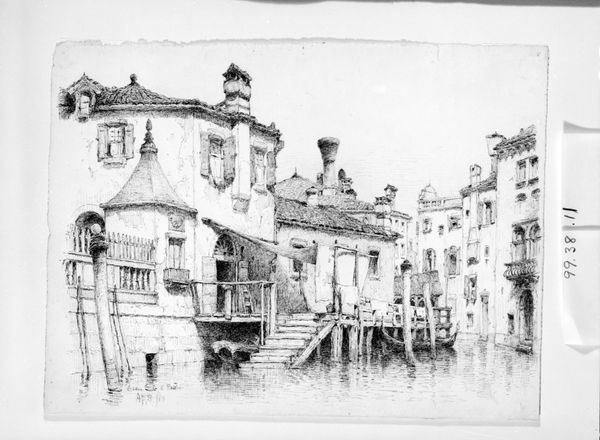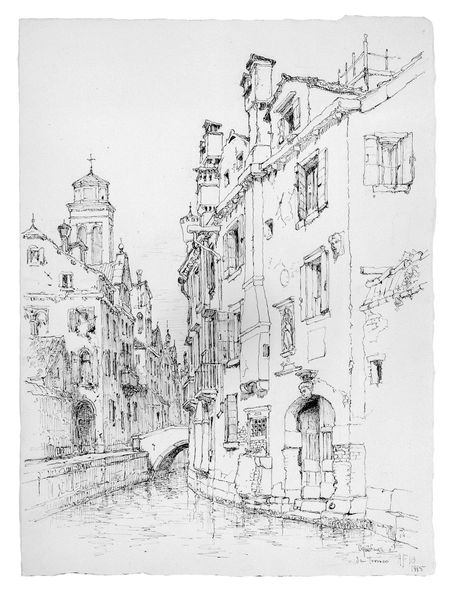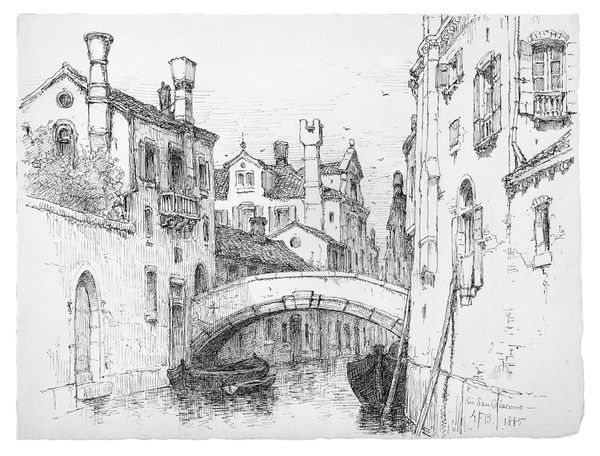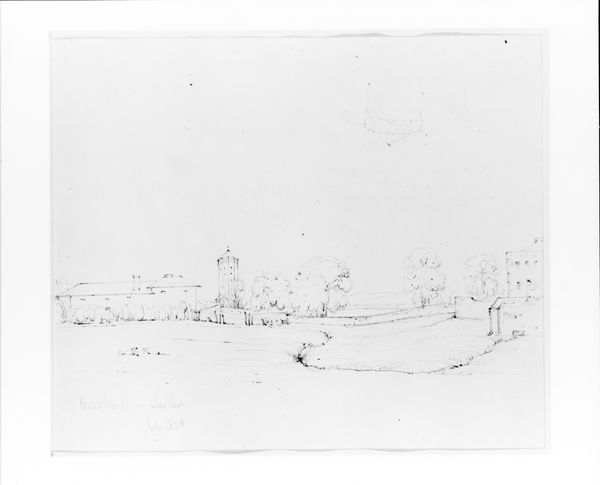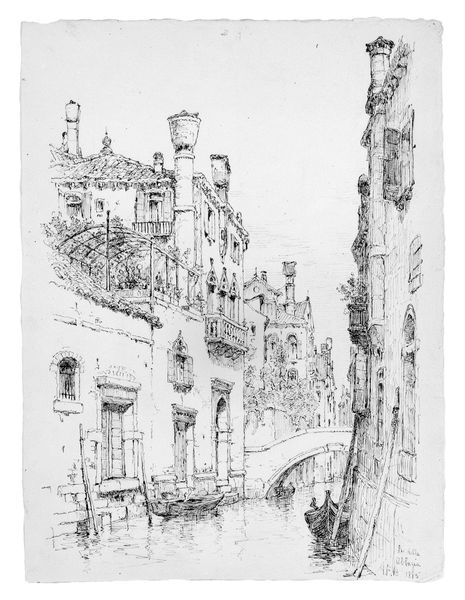
drawing, ink, pen
#
pen and ink
#
drawing
#
pen drawing
#
landscape
#
etching
#
ink
#
linocut print
#
pen
#
cityscape
#
realism
Dimensions: 9 13/16 x 12 15/16 in. (24.9 x 32.9 cm)
Copyright: Public Domain
Editor: Here we have Andrew Fisher Bunner’s "Sketch of Venice," created around 1885, rendered with pen and ink. It's captivating how Bunner captured this Venetian building. What can you tell me about this piece? Curator: It’s a striking image. This sketch exists within the tradition of artists representing Venice as a fading but beautiful icon of European history. Think of it not just as a picture of a building, but an engagement with Venice as a cultural symbol—one increasingly shaped by tourism. Consider, who was the intended audience for this work? Was it destined for exhibition, reproduction, or personal consumption? These questions can alter our reading of it. Editor: That's interesting. So, how does this piece engage with the 'politics of imagery', like you mentioned earlier? Curator: In the late 19th century, Venice was increasingly packaged and sold as a tourist destination. This sketch, with its slightly decaying building, romanticizes Venice. But consider the role Bunner is playing: is he simply recording, or is he participating in constructing this image for a particular market? Where was it exhibited, and for whom was it intended? Editor: I never thought about it in terms of "selling" Venice, even in a sketch. The decaying details now seem much more deliberate. Curator: Precisely. We can use these images to reflect on who had access to such places and representations, and whose stories were privileged in the process of immortalizing these landmarks. What have you learned? Editor: It’s fascinating to consider the layers of cultural influence within what seemed like a straightforward landscape drawing. It gives me a lot to consider. Curator: Exactly, and understanding the cultural context helps unlock further appreciation. It makes me look at Bunner's work from a different point of view.
Comments
No comments
Be the first to comment and join the conversation on the ultimate creative platform.
